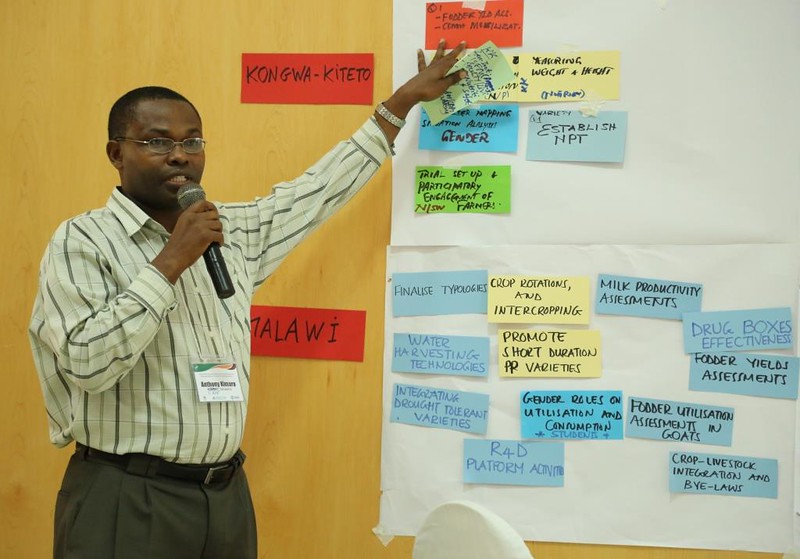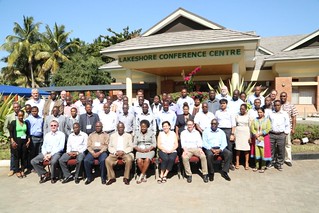Africa RISING project partners review achievements and plans for East and Southern Africa

More than 50 scientists from CGIAR centres and National Research Systems converged in Mangochi, Malawi from 13 – 15 July for the review and planning meeting of the Africa RISING East and Southern Africa (ESA) Project.
The meeting, which is held annually, brought together all partners implementing activities under the International Institute of Tropical Agriculture (IITA)-led project and focused on consolidating achievements from activities by all implementing partners in the region. Discussions at the three-day meeting also touched on how to ensure partners successfully execute all the activities they are implementing as phase 1 of the project comes to an end in 2016 and how these activities can contribute to further increasing project impact in a possible second phase.
Consolidating project achievements
At the meeting’s opening, Victor Manyong, the IITA director for East Africa and chair of the Africa RISING ESA called on project partners to consolidate their achievements and successes since the start of their activities so the project team can use this information to make a compelling case for funding for a second phase of the project. Manyong also reassured participants that systems research would continue being an integral part of CGIAR research despite recent and expected changes in CGIAR research programs. He noted that Africa RISING as a systems research project would continue working with other systems research initiatives under the new maize, legume and root tubers and bananas agrifood systems research program after 2016.
Further setting the tone for the meeting, Irmgard Hoeschle-Zeledon, the Africa RISING West Africa and East/Southern Africa projects coordinator, called on partners to focus on bringing the first phase of the project (now in its final year) to a successful end and to build the basis for a second phase.
‘Funders have so far been pleased with the progress made by Africa RISING since inception in 2011. But more work still has to be done in the coming year. It is important that we focus on further disciplinary integration, refinement of the technologies that you have found to work and which you consider to be scalable, as well as on documentation of your research findings,’ she said.
‘Best-bet, best-fit’ agricultural systems technologies
A key highlight of the meeting was the presentation by project teams in Tanzania and Malawi of the ‘best-bet, best-fit’ technologies on which they have collected data and which they will propose for scaling in the second phase of the project. Some of the technologies identified in this category included doubled-up legume (pigeon pea-groundnut intercropping) in Ntcheu and Dedza districts of Malawi; integrated fodder and crop production in Kongwa and Kiteto districts in Tanzania; and food storage, value addition and mycotoxin management in Babati District, Tanzania.

‘This is a great step by the teams who have for the first time been able to present us with compelling data showing the scalable options/technologies identified,’ said Mateete Bekunda, the Africa RISING East and Southern Africa chief scientist. But he cautioned that in some cases the data presented was incomplete and needed another cropping season to be finalized. ‘We need to make this data more robust in the coming year and hopefully in the next, move on to scaling the technologies,’ he said.
Meeting feed the future goals
Brian Martalus, the United States Agency for International Development (USAID) Feed the Future initiative coordinator in Zambia, who was attending the second Africa RISING ESA project review meeting, said the project’s shift to start planning for scaling up of successes was a a key step in meeting the Feed the Future program goals in the region.
What will a possible second phase of Africa RISING look like?
Project partners expressed optimism that the second phase of the project will focus on how getting the ‘best-bet, best-fit’ technologies into the hands of smallholder farmers.
‘In the next phase we want to work more with partners to get our technologies to farmers so that they are better able to adapt to changing environments resulting from climate and socio-economic conditions,’ said Irmgard Hoeschle-Zeledon. ‘We are also likely to do more social science research on how technologies are adopted and the potential constraints to adoption as well as how to overcome them,’ she said.




